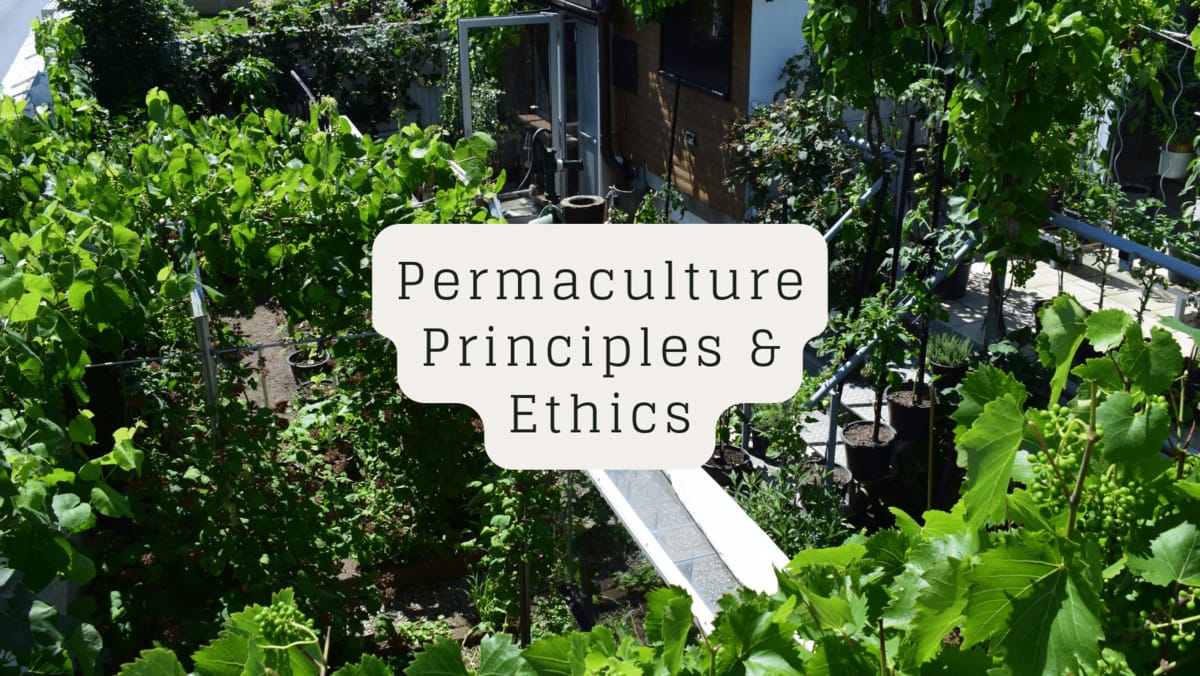- Permacultured
- Posts
- Growing a year's worth of fruit in your backyard
Growing a year's worth of fruit in your backyard
And what happens when ice replaces a tree's leaves?
Psst... Refer Permacultured to one friend with your custom code to get access to our database of 468 edible permaculture plants.
In today's newsletter:
💧 The big idea: How to grow a year's worth of fruit on 200 sq. feet.
🌎 Natural wonders: When ice replaces a tree's leaves
🤏 The small idea: The life philosophy of permaculture founders
🥝 Growing a year's worth of fruit on 200 sq ft:

The average American backyard is approximately 6,000 sq ft.
Using less than 1/20th of that space, you can grow a year's worth of fruit and nuts using a technique I call the FuNN Planting Pattern.
I picked up parts of this method from Stefan Sobkowiak of the Permaculture Orchard, where he grows acres and acres of apples, pears, and more with minimal maintenance.
Where Stefan optimized the FuNN pattern for crops he can sell at markets (apples and pears), I optimized the FuNN for taste and calories.
What is the FuNN Planting Pattern?
FuNN stands for Fruit, Nut, and Nitrogen. I threw the "u" in there because 1) I can, and 2) it's a better acronym.
The FuNN pattern is a "unit" of a food forest capable of producing well over 150,000 calories per season in a small space of 20 feet by 10 feet.
The unit consists of one full-sized fruit tree, one nut tree (or second fruit species), and a nitrogen fixer. For each tree, you also plant two shrubs and 20 small perennials (one per foot, 10 per side). At the base of one tree, you plant a vine that will use the tree as a living trellis.
The FuNN pattern is designed to be expanded like links on a chain. Once you plant a single "unit" of fruit, nut, nitrogen, and the associated perennials, you can propagate your plants into another "unit" in the chain.
Generalized math on propagation is 10x every two years, meaning you can turn one tree into ten trees every two years.
An Example of the FuNN Planting Pattern:
For a backyard in USDA Zone 8, here's a sample planting pattern:
Fruit: White Sapote (Mexican Apple) - 67,500-72,000 calories per adult tree
Nut: Common Hazelnut (Filbert) - 18,500-22,000 calories per adult tree
Nitrogen Fixer: Goumi - 12,000-18,000 calories per tree
Shrubs:
2x Golden Currants: 3,500 calories per shrub
2x Gooseberries: 3,500 calories per shrub
Perennials:
10x Blackberries: 2,250 calories per plant
10x Raspberries: 500 calories per plant
20x Oca: 350 calories per plant
Vine:
Grape: 3,500 calories per vine
Total Calories: 146,500-160,500.
Getting Started:
It's now winter. Though it's not a time to be out harvesting fruit in the Northern Hemisphere, it is time for you to order your plants for this next growing season.
For most trees, the optimal window to plant is between Jan. 1 and March 31.
Where should you purchase plants for your FuNN Planting Pattern? I'm glad you asked. My friends over at Raintree Nursery have opened their pre-orders for Spring 2023 deliveries.
Raintree has one of the best selections of fruit trees in the country 👇🏼

Tell me you've seen better looking fruits...
Even better, Raintree delivers nationwide. Check them out and tell them who sent you!
🌎 Natural wonders for your eyeballs (10/10 guarantee):
😍 What happens when ice replaces tree leaves
🦚 A bird with an epic mohawk
🦙 Llamas posing for a picture
🌿 Permaculture Principles and Ethics

Some people certainly give permaculture a "tree hugger" label, but the permaculture founders had a more practical view of growing food:
If you create an agriculture system that consumes more than it produces, it won't be an agriculture system that lasts very long.
To ensure permaculture farms pay attention to long-term sustainability, the founders created guidelines called Principles and Ethics. They apply to more than farming.
I like to think of them as life philosophy principles that also apply to food production.
That's it for this week's newsletter.
Forwarded this email? Click here to sign up!
Tell us how we did 👇🏼

Reply